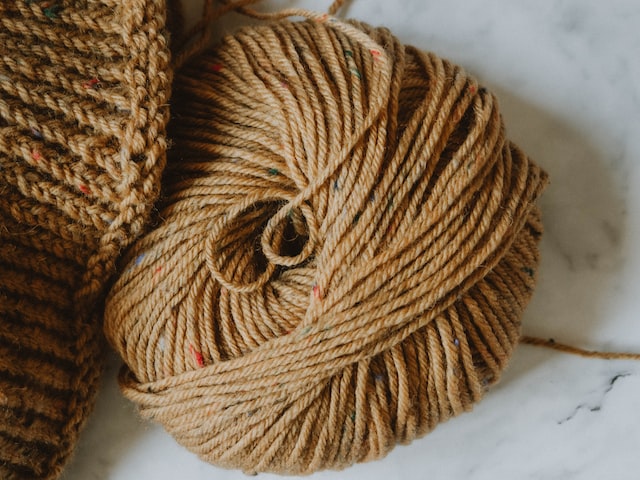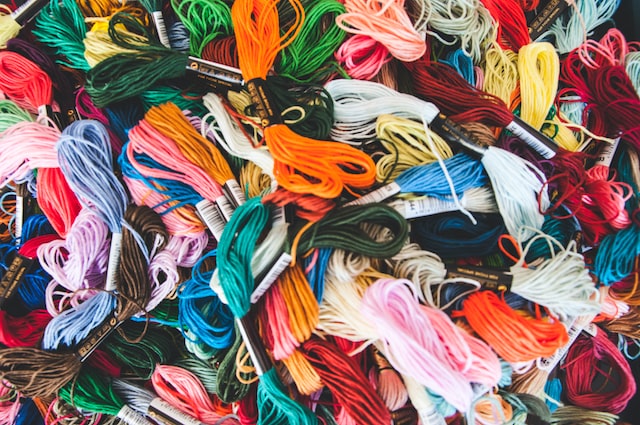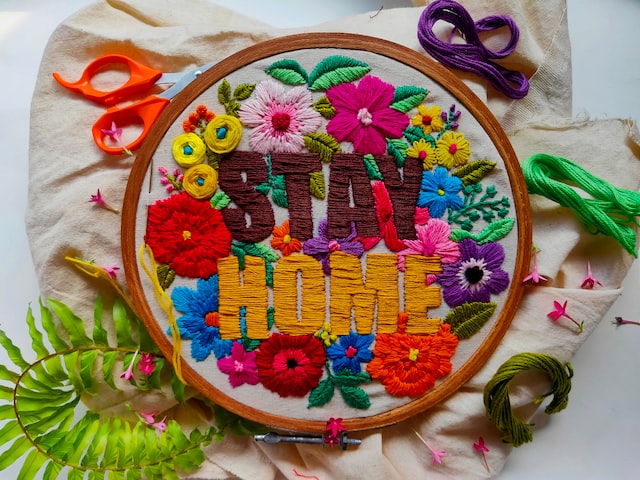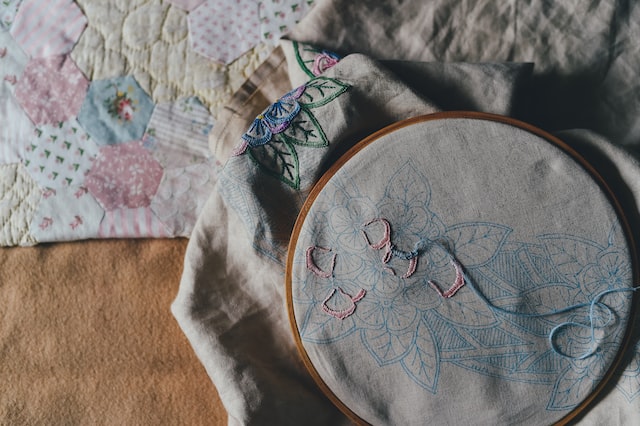If you’re looking for a way to achieve a professional finish on your sewing projects, then look no further than the hidden stitch! This versatile stitching technique can be used to sew a variety of seams, hems, and pockets, and is perfect for both beginners and experienced sewers alike.
In this article, we’ll tell you what is sewing hia dden stitch and how you can do it? .o you can get started on your next project right away.

What is a Sewing Hidden Stitch?
So what is a hidden stitch? Simply put, it’s a stitching method that helps to hide the stitches on the back side of the fabric. This gives your projects a much cleaner and more polished look, as well as makes them more durable. There are several different ways to sew a hidden stitch, but in this guide, we’ll be focusing on the most common method: the double-needle method.
Step-by-step Guide to Sewing the Perfect Hidden Stitch
To sew the perfect hidden stitch, follow these steps:
- Thread your needle with an invisible thread. You can find this type of thread at most craft stores.
- Knot the end of the thread to secure it.
- Insert the needle into the fabric where you want to begin sewing. Bring the needle up through the fabric and pull the thread taut.
- Insert the needle back into the fabric a short distance away from where you brought it up. Be sure to keep the tension on the thread tight as you do this so that the stitches do not show on the surface of the fabric.
- Continue inserting the needle and bringing it up a short distance away until you reach the end of your seam. Make sure to knot off the end of the thread when you are finished so that your stitches do not come undone.

Tools and Materials Needed for Sewing a Hidden Stitch
InToew a hidden stitch, you will need the following tools and materials:
- A sewing needle
- Thread (preferably in a color that matches the fabric)
- Scissors
- A seam ripper (optional)

To begin, thread your needle and knot the end of the thread. Then, insert the needle into the fabric from the wrong side, coming up through to the right side. Next, take a small stitch (around 1/4 inch) on the right side of the fabric. Be sure not to pull the thread too tight, as this can cause puckering. Now, insert the needle back into the fabric from the right side, coming up through to the wrong side.
Again, take a small stitch on the wrong side of the fabric. Continue this process until you reach the end of your seam. When you are finished, knot your thread on the wrong side of the fabric and trim any excess thread.

Types of Fabric Suitable for a Hidden Stitch
Different fabrics will require different types of hidden stitches. For example, a lightweight fabric will need a small, delicate stitch, while a heavier fabric will need a stronger, more durable stitch. Here are some tips on choosing the right type of fabric for your project:
- Lightweight fabrics: Silk, chiffon, and other delicate fabrics are best suited for a small, barely-there hidden stitch. Use a fine thread and needle to avoid damaging the fabric.
- Medium-weight fabrics: Linen, cotton, and other medium-weight fabrics can handle a slightly larger hidden stitch. This is a good option if you’re looking for more stability without adding bulk.
- Heavyweight fabrics: Denim, canvas, and other heavyweight fabrics can handle a heavy-duty hidden stitch. This is ideal for projects that need to be extra strong or durable.

Different Techniques of Sewing a Hidden Stitch
There are a few different ways that you can sew a hidden stitch, and the technique that you use will depend on the project that you are working on. If you are working on a project that has a lot of layers, such as a quilt, you may want to use a blind stitch. This type of stitch is sewn by hand and is not visible from the top of the project. To sew a blind stitch, you will need to start at the bottom layer of fabric and work your way up to the top.
Another option for sewing a hidden stitch is to use a ladder stitch. This type of stitch is also sewn by hand, but it is slightly different than a blind stitch. With a ladder stitch, you will start at the top of the project and work your way down. This type of stitch is often used for hems or other areas where there are not many layers of fabric.
If you are working on a project that does not have many layers, such as a shirt or pants, you can use a machine to sew a hidden seam. To do this, you will need to set your machine to zigzag mode and then sew along the edge of the fabric. This type of seam will be less noticeable than if you used a straight stitch.

Tips and Tricks for Making a Professional-Looking Hidden Stitch
- Start by threading a needle with a strong thread. You’ll want to use a needle that is slightly larger than the one you used for the garment’s construction, as this will make it easier to sew the hidden stitch.
- Next, knot the end of the thread and insert the needle into the fabric from the backside. Bring the needle up through the fabric, making sure to catch a bit of the weft threads.
- Now, take a small stitch in the fabric and then pull the thread tight. This will create a small loop on the back side of the fabric.
- Insert the needle into this loop and then pull it through until the knot rests against the fabric surface.
- Finally, take another small stitch in the fabric and repeat these steps until you reach the end of your seam.

How to Hand Stitch a Closed Seam
Assuming you’re already familiar with the basics of hand stitching, let’s move on to how to stitch a closed seam. This is a great technique to use when you want your stitches to be less visible, as the name suggests.
To begin, thread your needle and knot the end. Then, insert the needle into the fabric from the wrong side, coming up through both layers of fabric. Next, take a small stitch in the fabric (just catching the top layer), and then pull the thread through until the knot stops it.
Now insert the needle back into the fabric, this time going down through both layers. Come up again a short distance away, and take another small stitch in the top layer only. Continue this process until you reach the end of your seam.
When you’re finished, knot off your thread on the wrong side of the fabric and trim any excess. And that’s it! A simple but effective way to achieve near-invisible stitches on your next sewing project.

Conclusion
Sewing hidden stitch is an essential skill for any sewer. Using this step-by-step guide, you should now have a better understanding of how to sew up your projects with neneatesults. With practice and patience, you can master this technique in no time and make sure every sewing project looks its best.

FAQs
Are invisible stitches strong?
Invisible stitches are a popular choice for many people because they seem strong. However, whether or not invisible stitches are really strong depends on their particular construction and how well they hold up over time. Generally speaking, invisible stitches that use thread that is anchored in the fabric are stronger than those that rely solely on elasticity to keep them in place.
Do I need stitches if I see white?
If you see white, it is generally not a sign that you need stitches. However, if the object is in close proximity to a major artery or vein, it is important to seek medical attention. If the object is small and not near any major arteries or veins, then it is usually safe to leave it alone.

[…] Sewing too quickly can cause the needle to break or the thread to snap. Start with a few practice stitches on scrap leather before you attempt to sew a seam on your project […]
[…] sewing machine opens up a world of sewing possibilities. For further learning, consider exploring hidden stitch techniques for seamless finishes or sewing tips for beginners by hand, which can complement your machine […]